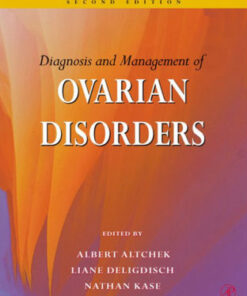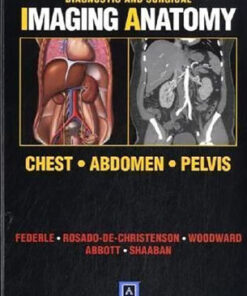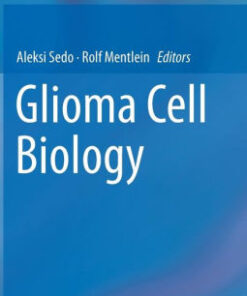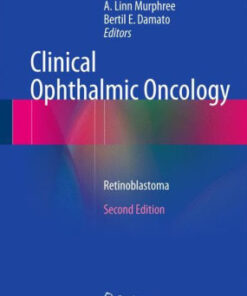(PDF) Oncologic Critical Care by Joseph L. Nates
$82.00
Download instantly Oncologic Critical Care by Joseph L. Nates, Kristen J. Price. It is ebook in PDF format.
ISBN-10: 3319745875 ISBN-13: 9783319745879
Preview
This is the PDF eBook version for Oncologic Critical Care by Joseph L. Nates, Kristen J. Price
Table of Contents
Part 1. Organization and Management of an Oncologic Critical Care Unit
1. Oncologic Critical Care Department Organization
2. Critical Care Staffing
3. ICU Admission and Discharge Criteria
4. Quality Assurance and Improvement
5. ICU Utilization
6. Current Trends in ICU Beds, Use, Occupancy, and Costs in the United States
7. Early Warning Systems for the ICU
8. Patient Risk Prediction Model (Severity of Illness Scores)
Part 2. Multidisciplinary Care
9. Rapid Response Team
10. Nursing
11. Pharmacy
12. Nutrition
13. Physical and Occupational Therapy
14. Patient Support
15. Advocacy and Social Work
16. Chaplaincy
Part 3. Advance Practice Providers
17. Role of the APPs in the Onco-ICU
18. Credentialing
19. Competencies
Part 4. Clinical Pharmacy
20. Chemotherapy
21. Considerations for Medications Commonly Utilized in the Oncology Population
22. Supportive Care Considerations
Part 5. Dermatologic Complications
23. GHVD, TEN, and Mycosis Fungoides
Part 6. Neurologic Diseases
24. Medication-induced Neurotoxicity
25. Delirium and Psychosis
26. Seizures and Status Epilepticus
27. Stroke
28. Increased Intracranial Pressure (brain mets, ich, hydrocephalus, etc)
29. Posterior Reversible Encephalopathy Syndrome (PRES)
30. Tumor-related Diseases/Neoplastic Meningitis/Leptomeningeal Disease
31. Frequent CNS Infections in the Immunosuppressed Patient
32. Intracranial Hemorrhage Focused on Cancer and Hemato-oncologic Patients
33. Spinal Cord Compression
34. TCD in the ICU
Part 7. Respiratory Diseases
35. Acute and Chronic Respiratory Failure
36. Oxygen therapy (low-flow and high-flow oxygen therapy)
37. Respiratory Care of the Critically Ill Patient
38. Management of Tracheobronchial Diseases
39. Pulmonary Hypertension
40. ARDS and the differential diagnosis of pulmonary infiltrates in the cancer patient
41. Diffuse Alveolar Hemorrhage
42. Differentiation (Retinoic acid ATRA) Syndrome
43. Late Non Infectious Pulmonary Complications in Hematopoietic Stem Cell Transplantation
44. Treatment-related Lung Injury
45. Pneumonia in the Cancer Patient
46. Ventilatory Strategies and Weaning from Mechanical Ventilation
47. Noninvasive Ventilation
48. High Frequency Ventilation
49. Prone Ventilatory Therapy 50. Bi-Level and Airway Pressure Release Ventilation
51. NAVA
52. ECMO in Cancer Patients
53. Tracheostomy: Appropriateness and Indications in Cancer Patients
54. Pleural Disease, Malignant and Benign Pleural Effusions
55. Sleep Disorders in the Oncologic ICU
Part 8. Cardiovascular Diseases
56. Hemodynamic evaluation
57. Acute Coronary Syndrome Thrombocytopenia and Antiplatelet Therapy in the Cancer Patient
58. Interventional Cardiology in the Cancer Patient
59. Arrhythmias in the Cancer Patient
60. Management of Pericardial Effusions/Tamponade
61. Chemotherapy-related Cardiovascular Complications
62. Cardiopulmonary Resuscitation in the Cancer Patient
Part 9. Gastrointestinal Disease
63. Gastrointestinal Bleeding 64. Malignant Ascites
65. Hepatobiliary Disease
66. Acute abdomen in the cancer patient
Part 10. Genitourinary Disease
67. Hematuria
68. Hemorrhagic cystitis
69. Obstructive Uropathy in the Cancer Patient
Part 11. Renal Disease
70. Acute Renal Failure
71. Renal Replacement Therapy
Part 12. Metabolic/Endocrine Complications
72. Adrenal Emergencies
73. Carcinoid Crises
74. Thyroid Emergencies
75. Electrolytic Abnormalities
76. Hypoglycemia and Hyperglycemia in the Cancer Patient
Part 13. Hematologic Diseases
77. Malignant Hematological Diseases
78. Benign Hematological Diseases
79. Immunology and molecular biology for the intensivist
Part 14. Transfusion Medicine
80. Statistics
81. Blood Products
82. Transfusion Reactions
83. Transfusion Related Lung Injury
84. Alternatives to Blood Products
85. Massive Bleeding Prool
86. Transfusion Thresholds
Part 15. Vascular Complications
87. Management of Arterial Bleeding
88. Prevention and Management of Venous Thromboembolism in the Cancer Patient
89. SVC Syndrome
90. Catheter-related Deep Vein Thrombosis
Part 16. Infectious Diseases
91. Infection Control Procedures
92. Neutropenic Fever
93. Sepsis and Management of Septic Shock
94. Management of Multi-Drug Resistant Organisms
95. Fungal Infections
96. Viral Infections
97. Bacterial and Atypical Infections
98. Catheter and Device Related Infections
99. Nosocomial Infections and Ventilator Associated Pneumonia
100. Protozoal Infections in the Cancer Patients101. Antibiotic Stewardship
102. Tropical diseases in the cancer patient
103. Soft tissue infections
Part 17. Post-Surgical Care of the Critically Ill Cancer Patient
104. Neurosurgery
105. Head & Neck Surgery
106. Plastic Surgery & Flap Graft Management
107. Thoracic Surgery
108. GI Surgery
109. Hepatic Surgery
110. Pancreatic Surgery
111. Genitourinary Surgery
112. Orthopedic Surgery
113. Interventional Radiology
114. Radiation Therapy & Gamma Knife Procedures
115. MRI
116. Outpatient Surgery
Part 18. Special Patient Populations
117. Management of the Pregnant Critically Ill Cancer Patient
118. Special Considerations of Hemato-Oncologic Critically Ill Patient
119. Pediatric Cancer Critical Care
Part 19. Critical Care Procedures
120. ICU Procedures by APP
121. Management of the Airway in the Cancer Patient
122. Use of Ultrasound Guidance
123. Interventional Radiology Procedures
Part 20. Ethics
124. Do Not Resuscitate Orders125. Ethics Consultation
126. End of Life Care
127. Medical Futility
Part 21. Pain Management, Palliative Care, and Outcomes
128. Acute Pain
129. Chronic Pain
130. Substance Withdrawal
131. Palliative Care in the critically ill cancer patient
132. Outcomes in Critically Ill Oncologic Patients




